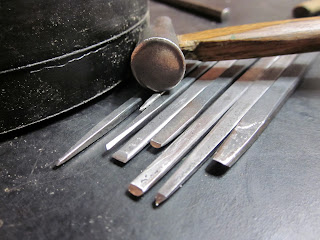Edinburgh is a different story. It is not a gold mine but a full-on treasure-hoard of everything I hold dear about human creation: beautiful buildings of every age past leaning upon each other, narrow passages and steep, dark stairwells winding through soaring stone buildings clinging to the stony hide of the land they are built on. Cobble and flag on the ground everywhere are slick with wet and the sky is a shifting iron mass of pure emotion, tugging your heart this way and that. The people are kind but earnest and solemn in a way that reminds a young American traveler that their lives are built upon those uncounted before them, that they have been here a long time. The many planar levels of the city overlap deliciously: it seems that every road is a bridge or an underpass, with so many diagonals and inclines making you feel like secret meetings could be whispered above or below or behind you anywhere.
But truly, in what other city can you walk five minutes away from that and be here:
And the museums-BY GOD the museums! The National Museum of Scotland has some of the coolest artifacts and greatest presentation of all the museums I have been to, not to mention a totally badass logo. On top of that, my awesome friend Rob (deeply involved in the Beltane and Samhain city festivals) knew a lot of museum people, and we got invited to a "Night Museum Party", where the museum re-opened at 9 PM and all five floors were devoted to partying and music and looking at artifacts and Giant Jenga and Giant Connect-Four and holding boa-constrictors, etc. There were many more museums but this is the one I visited the most.
And now the old stuff! This incredible (whalebone?) carved reliquary. I love boxes.
There were a delectable amount of Viking-age artifacts, a time of great craftsmanship in Scotland. Below is a beautiful pattern-welded sword with a clarifying schematic:
 |
| Yeahhh those twists. |
I must say that what is to this day my favorite museum in the world is this one: the National College of Surgeons Museum in Edinburgh. Stuffed to the brim with the macabre and the fascinating: surgical implements, organs in formaldehyde, bones riddled with musket balls, field surgery kits, questionable anaesthetic devices, lobotomizationalia, gangrenous limbs, and a slightly out-of-place shrine to Arthur Conan Doyle.
I was moved by this face, that of a soldier from World War One who was shot between the eyes and died. The wound was sewn up and his face preserved, exactly as it was at the time of his death.
Beyond the museums, I got to visit (actually, more like "find in a labyrinth") the only full-time blade shop in Edinburgh: Macdonald Armouries! Their picturesque shop is below, at the back end of some hidden mews.
This is Greg, apprentice of Paul Macdonald, giving me a little tour on that brisk morning.
The door into the mews, tastefully adorned with crossbows:
Daniel shows me a crossbowman's pavaise shield and the armoury's requisite liquor cabinet:
It just so happens that the basket-hilted broadsword of the infamous Highland outlaw Rob Roy MacGregor was in for repairs (on loan from his heirs). Here I am, just giving it a little handle. Felt great! Nice and light.
But this stint too had to end, for it turned to March, and on the Third day of that month I was to meet Mr. Owen Bush, the man for whom I traveled to the UK, at London's famous Park Lane Arms fair. So once again I wended south!




















































